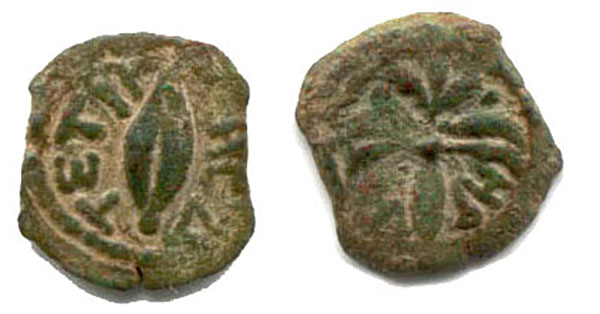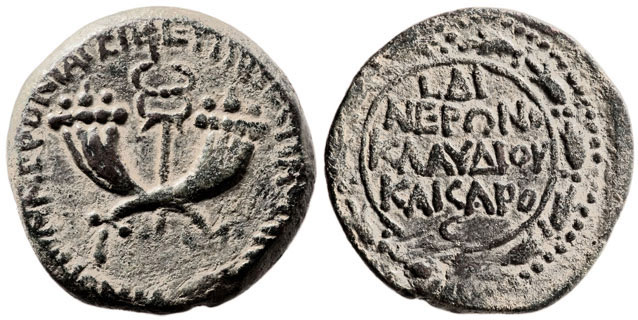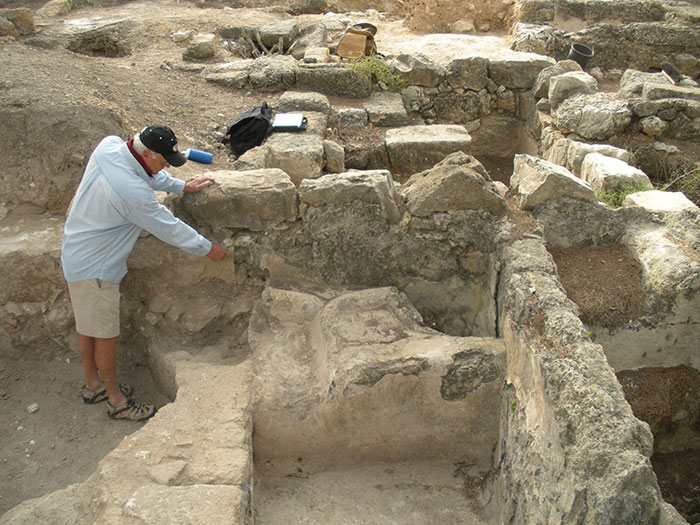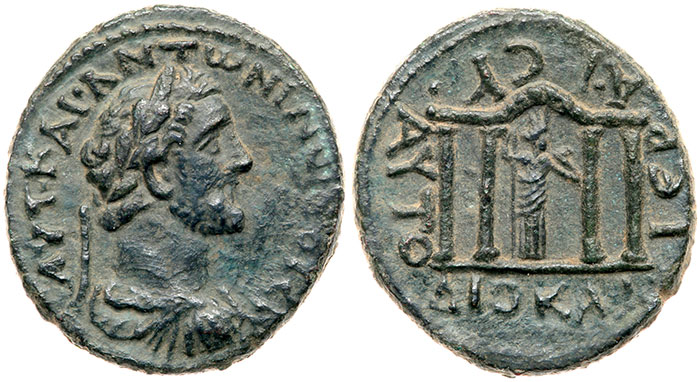By David Hendin for CoinWeek …..
Over the years I have spent three seasons as numismatist at excavations of Sepphoris in the Galilee, sponsored by Duke and Hebrew Universities. This is one of the reasons I’ve become so fond of the city the ancient historian Josephus dubbed “the ornament of all Galilee.”
The coins of Sepphoris were struck for only about 200 years (except for the brief Umayyad period some 500 years after the last Roman provincial coins were struck). During the period they were being struck, however, the coins of Sepphoris preserved a fascinating historic portrait of the city.
According to pottery found at the site, people began to live communally at Sepphoris around 800 BCE and flourished through the Persian and Hellenistic periods. We believe the first coins were struck at Sepphoris shortly after it became the first capital of Herod Antipas. He became tetrarch over the Galilee, Peraea, and the Jewish portion of Transjordan when his father Herod I died in 4 BCE.

I had the excitement of discovering this coin in a lot of bronze coins that came into my hands in the 1990s, and I published it in the Israel Numismatic Journal 15 (2003 – 2006). Before this discovery, the first coins known to be struck by Antipas were dated “year 24” and minted at Tiberias in 20/21 CE. This coin, however, was manufactured in the style of a typical Herodian prutah of the period (Photo 1). The weight is consistent with the coins of Herod Archelaus, brother of Antipas, and it carried the Jewish-friendly motifs of grain and a date palm tree. This coin does not carry a mint name, but it does carry the name “Herod, Tetrarch, [year] 4” and since we know that Antipas did not move his capital to Tiberias until the years between 17 and 21 CE, we can conclude the coin was struck at Sepphoris. The fourth year of Antipas’ tetrarchy corresponds to the year 1 BCE/1 CE, the exact year we change our reckoning from BCE to CE.
Until now, the coin is a unique example, although I have no doubt that others will be discovered in the future.

The next coin struck at Sepphoris was dated in the 14th year of the Roman emperor Nero (67/68 CE), and was struck early in the reign of Agrippa II. Unlike the royal coins of Agrippa II, however, it does not carry a graven image of an emperor’s portrait, only a wreath and splayed, crossed cornucopias (Photo 2). It’s a fascinating coin because its inscription provides three names of this city: Sepphoris, Irenopolis (“City of Peace”); and Neronias, after the emperor Nero.
The “City of Peace” title is of special interest because, during the Jewish War of 66-70 CE, Sepphoris opened itself to the Roman army, and declared itself against the war. Agrippa II himself opposed the war against Rome, and the Sepphoreans followed his viewpoint. The legend on the obverse of the coin provides another unique twist since it refers to “In the time of Vespasian”, thus making it the first coin referring to Vespasian while he was still only a general under Nero–a year or more before he was proclaimed emperor!
No coins were struck in this “city of peace” in the wake of the Jewish War, but the city became more cosmopolitan and its population grew.

The next series of four coins of Sepphoris were minted some 30 years later, during the reign of Trajan (98-117 CE), also tell a fascinating story. While each of them carries an obverse portrait of Trajan, the reverses are uniquely symbolic of its position as the foremost Jewish city in the Galilee: laurel wreath, palm tree (Photo 3), caduceus, and ears of grain – each a Greek-inspired symbol that featured prominently on earlier coins struck under the Jewish rulers of the area. The inscription on these coins is simply “[of] Sepphoris” and it has been suggested that their designs were the result of the influence of the local “boule” or city council, which consisted of Jewish leaders.
Another remarkable aspect of the coins of Sepphoris struck under Trajan is the obverse inscription, which is unique among ancient coins. This inscription states TPAIANOC AYTOKPATΩP EΔΩKEN (“the emperor Trajan gave [or permitted]”). The phrase may mean that Trajan permitted the local council of Sepphoris to issue coins and that the permission received special notation by the council because the city had not previously issued coinage with the portrait of a Roman emperor.

The excavations at Sepphoris confirm the Jewish nature of the city’s population at the time. In the domiciles our team excavated on the Western acropolis of the hill, we found no fewer than 25 ritual baths (Photo 4). And while excavators found thousands of animal bones (many of them in food preparation areas, near ovens), the animals consisted of sheep, goats, cattle, and birds but no pigs – even though pig bones were found at other sites in Israel from this period.
Sepphoris discontinued minting coins after Trajan’s rule, and Meshorer suggests it may have been “a punishment for the city’s support of the rebellion of the Jews under Trajan in 115-117/18 CE, called the “War of Quietus“. Although this rebellion occurred in the Diaspora, there are some indications that it had supporters, and perhaps even participants, among the Jewish population of this country, though no hard evidence is available.”

Coins were not struck again at Sepphoris until the reign of Antoninus Pius (138-161 CE), but now they had completely lost their previous Jewish character (Photo 5). The name Sepphoris had disappeared, and the city was now called “Diocaesarea”, a name combining the nomenclature of Caesar and Zeus (“Dio” in Greek). The general inscription can be translated as “Diocaesarea the holy, autonomous city of asylum” and the motifs include various Temples, the Tyche of the city, Zeus, and the Capitoline Triad of Zeus, Hera, and Athena.
At this point in the history of Sepphoris, it seems that a major Jewish presence continued but was joined by an additional Roman population, which constructed the kinds of Temples, roads, and shops one usually associates with a Roman city.

Under Caracalla (193-211 CE) and Elagabalus (218-222), a series of larger bronze coins were produced, some of which are medallion-sized. According to their inscriptions, these coins were struck to commemorate a treaty of friendship between the Senate and the Roman people and the holy council of Sepphoris (Photo 6).
The Talmud contains many stories concerning a friendship between a Roman emperor named Antoninus (a name used by both Caracalla and Elagabalus) and Rabbi Judah the Patriarch, who moved to Sepphoris around 200 CE and lived there for 17 years, during which time he was the principal compiler of the Mishnah. Meshorer notes that “Caracalla … is known to have been well disposed towards the Jews, and to have endeavored to develop the Roman East. Indeed, during his reign, [ancient Israel] progressed and flourished.”
After the reign of Elagabalus, no further coins were struck at Sepphoris until the rare issues of the Umayyad period in the seventh century CE. The reason for the cessation of minting here is not known, but Ya’akov Meshorer suggested that “it should be sought in the city’s decline in rank after the Sanhedrin had moved to Tiberias.”
© 2021 by David Hendin
Parts of some CoinWeek articles may be adapted from my previous articles or my Guide to Biblical Coins.
* * *
David Hendin is First Vice President and an Adjunct Curator at the American Numismatic Society (ANS). Send him your questions at [email protected] and he will try to answer questions of general interest in this space in the future.




